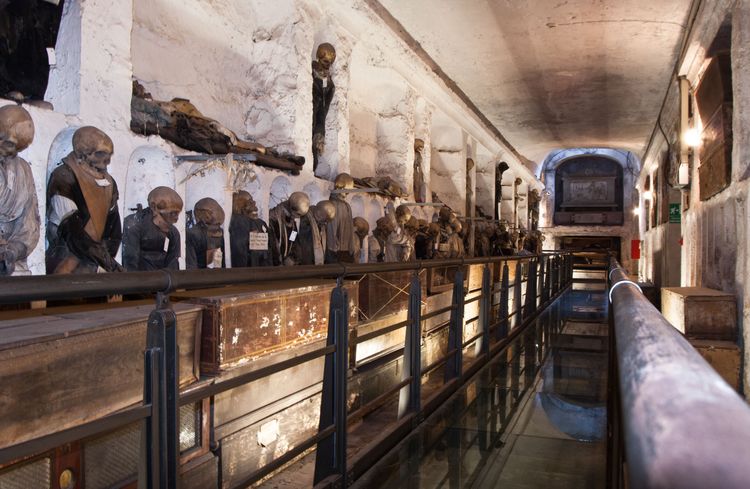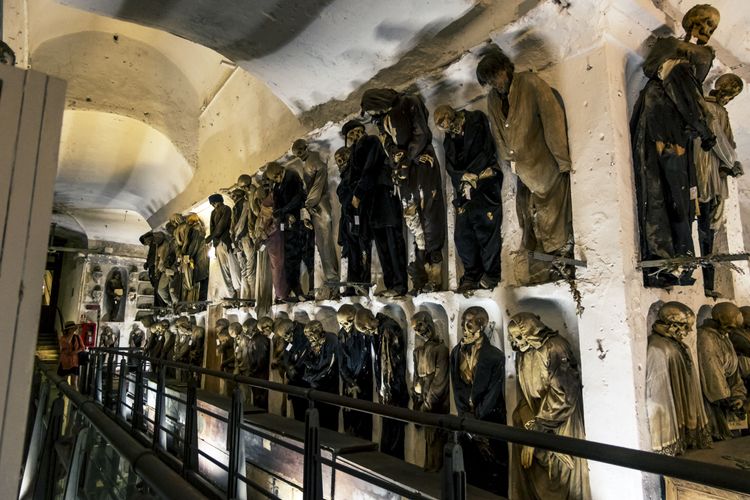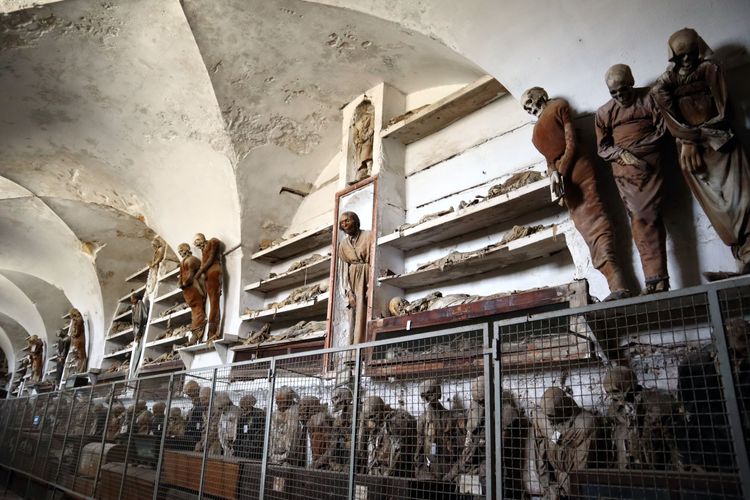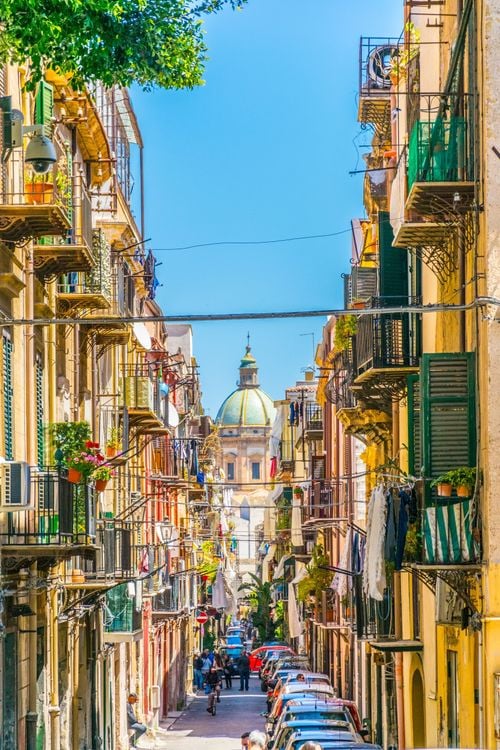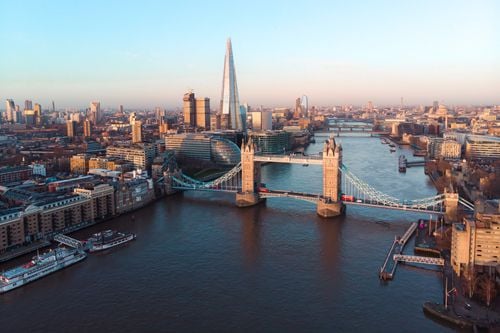For two centuries, the friars housed thousands of bodies of illustrious people and Sicilian notables placed in various corridors and divided by profession, gender and social position. During the visit, you will pass through the corridor of the Capuchin friars, the oldest part, the women's corridor, the men's corridor, the chapel of the Crucifix, where the virgins were kept, the children's chapel and, finally, the corridor of the professionals (lawyers, doctors, painters, etc.).
What drove the families of the deceased was not only the desire to preserve the state of the bodies, but above all the desire to continue to see their loved ones, to talk to them almost as if they were still alive.
Today, the Catacombs constitute a veritable museum of the dead and represent a cultural heritage much appreciated by tourists. Even the poets and writers of the time, such as Guy de Maupassant, Mario Praz, Alexandre Dumas, Carlo Levi and Ippolito Pindemonte, were so fascinated by them that the latter eulogised them in I Sepolcri, and the street leading to the church of Santa Maria della Pace was named Pindemonte in honour of the poet.
